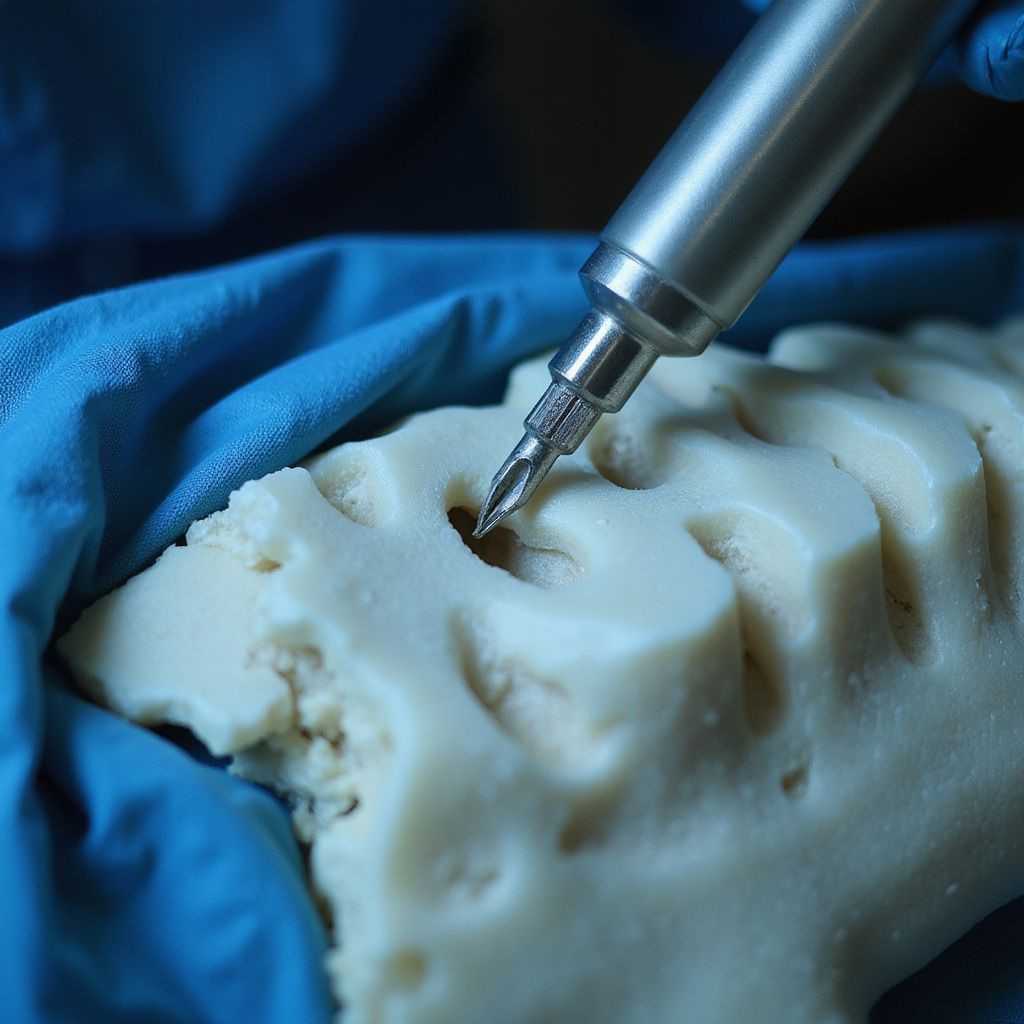Effective Pain Relief with Minimally Invasive Techniques
Mild Procedures for Pain Management
Targeted Pain Relief
Facet Joint Injections for Spine Pain
Purpose of Facet Injections
Facet injections deliver medication directly into the small joints of the spine to reduce inflammation and relieve localized pain.
Procedure Overview
Using imaging guidance, a precise dose of anesthetic and steroid is injected to target the affected facet joints, minimizing discomfort.
Benefits of Facet Injections
This minimally invasive treatment can improve mobility, decrease pain, and help identify the source of spinal discomfort.
What to Expect
The procedure is quick, typically outpatient, with most patients experiencing relief within days and minimal recovery time.
Radio Frequency Ablation
Radio frequency ablation targets specific nerves causing chronic pain by using heat generated from radio waves to disrupt pain signals. This minimally invasive procedure offers lasting relief, often reducing the need for medications and improving mobility. It typically involves a brief outpatient session with local anesthesia and guided imaging to ensure precision.
How It Works
A thin needle delivers radiofrequency energy to the affected nerve, creating a small lesion that blocks pain transmission. Patients usually experience gradual pain reduction over days to weeks, with effects lasting up to a year or more depending on individual conditions.
Patient Experience
Most patients tolerate the procedure well, reporting minimal discomfort during treatment and quick recovery. Post-procedure soreness is common but temporary. Follow-up visits help monitor progress and determine if repeat treatments are necessary.
Precision in Spine Care
Kyphoplasty: Restoring Spine Stability and Reducing Pain
What is Kyphoplasty?
Kyphoplasty is a minimally invasive procedure designed to treat spinal compression fractures by stabilizing the vertebrae and restoring height to reduce pain and improve mobility.
Learn More
Benefits of Kyphoplasty
This procedure offers rapid pain relief, improved posture, and a quicker return to daily activities by reinforcing weakened spinal bones with medical-grade cement.
Explore Benefits
What to Expect
Patients typically undergo kyphoplasty under local or general anesthesia, with a short recovery time and minimal hospital stay, allowing for a swift return to normal life.
Patient Guide
Epidural Steroid Injections
Epidural steroid injections target inflammation around spinal nerves to reduce pain and improve mobility. This minimally invasive procedure delivers corticosteroids directly into the epidural space, easing discomfort caused by conditions like herniated discs or spinal stenosis.
Procedure Overview
A thin needle is guided into the epidural space near the spine using imaging technology. The steroid medication is then injected to reduce nerve inflammation and swelling.
Learn More
Pain Relief Benefits
Patients often experience significant reduction in pain and improved function within days. The injection can provide relief lasting weeks to months, allowing better participation in physical therapy.
See Benefits
Safety and Recovery
The procedure is generally safe with minimal risks. Most patients resume normal activities shortly after, with mild soreness at the injection site being common.
Safety Info
Who Can Benefit?
Ideal for patients with nerve root irritation from spinal conditions such as herniated discs, sciatica, or spinal stenosis seeking non-surgical pain relief.
Check Eligibility
Procedure Duration
The injection typically takes 15 to 30 minutes and is performed on an outpatient basis with minimal preparation required.
Procedure Details
Follow-Up Care
Patients are advised to monitor symptoms and follow up with their physician to assess pain relief and discuss further treatment if needed.
Next Steps
Targeted Relief for SI Joint Pain
Managing Sacroiliac Joint Discomfort
Physical Therapy
Customized exercises improve joint stability and reduce inflammation to ease SI joint pain.
Learn More
SI Joint Injections
Precise corticosteroid injections reduce inflammation directly in the SI joint, providing significant pain relief.
Explore Options
Radiofrequency Ablation
Using heat to disrupt nerve signals, this procedure offers longer-lasting relief from SI joint pain.
See How It Works
Minimally Invasive Surgery
For persistent pain, surgical fusion stabilizes the SI joint to prevent painful movement.
Find Out More
Lifestyle Adjustments
Ergonomic changes and activity modifications help reduce stress on the SI joint daily.
Get Tips
Comprehensive Care Approach
Combining therapies tailored to your needs ensures effective and sustained SI joint pain management.
Contact Us











